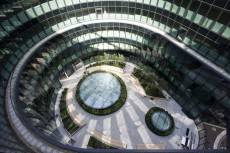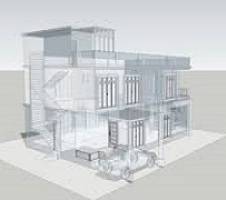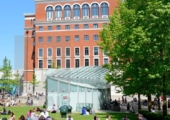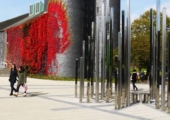November 12, 2014
Interruptions and a lack of engagement cost UK firms £15 bn each year
 UK businesses are suffering massive losses in company performance due to ‘disengaged’ employees who complain of working conditions that result in constant distraction and disruption and a lack of privacy, according to a new report published by office furniture maker Steelcase. Research by the Centre for Mental Health claims that presenteeism (at work physically but unproductive mentally) costs UK businesses £15bn per year and that includes the cost of disengaged employees. A new IPSOS survey commissioned by Steelcase, claims to highlights this and related issues. The survey of 10,500 employees working in open plan offices across 14 different countries and found that only 11 percent of workers are engaged and inspired at work, 63 percent lack engagement and are unmotivated and 37 percent describe their workplace as ‘stressful’. (more…)
UK businesses are suffering massive losses in company performance due to ‘disengaged’ employees who complain of working conditions that result in constant distraction and disruption and a lack of privacy, according to a new report published by office furniture maker Steelcase. Research by the Centre for Mental Health claims that presenteeism (at work physically but unproductive mentally) costs UK businesses £15bn per year and that includes the cost of disengaged employees. A new IPSOS survey commissioned by Steelcase, claims to highlights this and related issues. The survey of 10,500 employees working in open plan offices across 14 different countries and found that only 11 percent of workers are engaged and inspired at work, 63 percent lack engagement and are unmotivated and 37 percent describe their workplace as ‘stressful’. (more…)




























November 7, 2014
Orgatec 2014 focuses on collaboration, quiet and wellbeing in the workplace
by Anna King • Comment, Events, Furniture, Workplace design
Anna King reports from the biennial office furniture and interiors fair Orgatec, which took place recently in Cologne: Collaboration seemed to be king once again at this year’s Orgatec trade fair in Cologne, so much so that you’d be hard pressed to find a conventional workstation amongst the thousands of products on display. Even ergonomic task chairs in the traditional sense were thin on the ground. Senator’s offering was typical in its focus on collaborative work and the provision of work settings. As well as the Ad-Lib Scholar range for educational establishments, it presented the Ad-Lib Work Lounge multipurpose chair, both the work of British design studio PearsonLloyd. This upholstered model complete with headrest is available on glides or castors so it can slot into a multitude of workplace scenarios. Shown in some rich shades such as moss green and turquoise, it comes complete with a fold-down worksurface for brainstorming or other group working.
(more…)